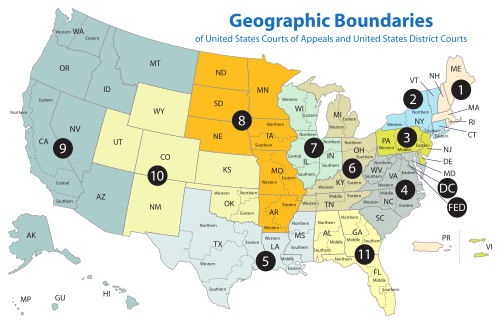
The United States courts of appeals are the intermediate appellate courts of the United States federal judiciary. They hear appeals of cases from the United States district courts and some U.S. administrative agencies, and their decisions can be appealed to the Supreme Court of the United States. The courts of appeals are divided into 13 "Circuits". Eleven of the circuits are numbered "First" through "Eleventh" and cover geographic areas of the United States and hear appeals from the U.S. district courts within their borders. The District of Columbia Circuit covers only Washington, DC. The Federal Circuit hears appeals from federal courts across the United States in cases involving certain specialized areas of law.

The United States district courts are the trial courts of the U.S. federal judiciary. There is one district court for each federal judicial district. Each district covers one U.S. state or a portion of a state. There is at least one federal courthouse in each district, and many districts have more than one. District court decisions are appealed to the U.S. court of appeals for the circuit in which they reside, except for certain specialized cases that are appealed to the U.S. Court of Appeals for the Federal Circuit or directly to the U.S. Supreme Court.

The United States Court of Appeals for the Second Circuit is one of the thirteen United States Courts of Appeals. Its territory covers the states of Connecticut, New York, and Vermont, and it has appellate jurisdiction over the U.S. district courts in the following federal judicial districts:

The United States Court of Appeals for the Fifth Circuit is one of the 13 United States courts of appeals. It has appellate jurisdiction over the U.S. district courts in the following federal judicial districts:
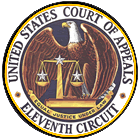
The United States Court of Appeals for the Eleventh Circuit is a federal appellate court over the following U.S. district courts:

The United States District Court for the District of Connecticut is the federal district court whose jurisdiction is the state of Connecticut. The court has offices in Bridgeport, Hartford, and New Haven. Appeals from the court are heard by the United States Court of Appeals for the Second Circuit. It was one of the original 13 courts established by the Judiciary Act of 1789, 1 Stat. 73, on September 24, 1789. The Court initially had a single judge, and remained so composed until March 3, 1927, when a second judge was added by 1927 44 Stat. 1348. Six additional judgeships were created between 1961 and 1990 to bring about the current total of eight judges. Court offices at Hartford and New Haven are located in the Abraham A. Ribicoff Federal Building and the Richard C. Lee United States Courthouse.

The United States District Court for the District of Massachusetts is the federal district court whose territorial jurisdiction is the Commonwealth of Massachusetts, United States. The first court session was held in Boston in 1789. The second term was held in Salem in 1790 and court session locations alternated between the two cities until 1813. That year, Boston became the court's permanent home. A western division was opened in Springfield in 1979 and a central division was opened in Worcester in 1987. The court's main building is the John Joseph Moakley Federal Courthouse on Fan Pier in South Boston.

The United States District Court for the District of Nevada is the federal district court whose jurisdiction is the state of Nevada. The court has locations in Las Vegas and Reno.

The United States District Court for the District of Vermont is the federal district court whose jurisdiction is the federal district of Vermont. The court has locations in Brattleboro, Burlington, and Rutland. The court was created by a March 2, 1791 amendment to the Judiciary Act of 1789 and assigned to the eastern circuit. Under the Midnight Judges Act, the Circuits were reorganized and this court was assigned to the United States Court of Appeals for the Second Circuit where it has remained since. Originally created with one judgeship, in 1966 a second judgeship was added.

The United States District Court for the Western District of Virginia is a United States district court.
The federal judiciary of the United States is one of the three branches of the federal government of the United States organized under the United States Constitution and laws of the federal government. The U.S. federal judiciary consists primarily of the U.S. Supreme Court, the U.S. Courts of Appeals, and the U.S. District Courts. It also includes a variety of other lesser federal tribunals.
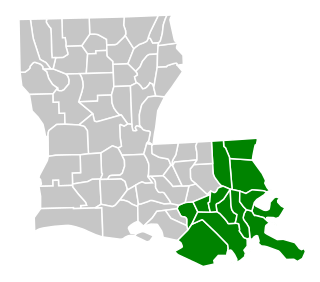
The United States District Court for the Eastern District of Louisiana is a United States federal court based in New Orleans.
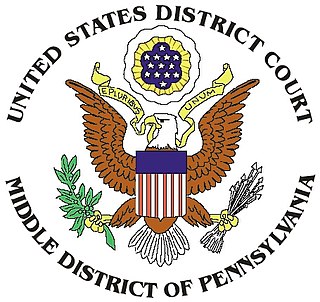
The United States District Court for the Middle District of Pennsylvania is a district level federal court with jurisdiction over approximately one half of Pennsylvania. The court was created in 1901 by subdividing the United States District Court for the Eastern District of Pennsylvania and the United States District Court for the Western District of Pennsylvania. The court is under the jurisdiction of the United States Court of Appeals for the Third Circuit.

The United States District Court for the Southern District of Texas is the federal district court with jurisdiction over the southeastern part of Texas. The court's headquarters is in Houston, Texas, and has six additional locations in the district.
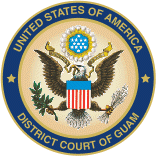
The District Court of Guam is a United States territorial court with jurisdiction over the United States territory of Guam. It sits in the capital, Hagåtña. Appeals of the court's decisions are taken to the United States Court of Appeals for the Ninth Circuit. It is not an Article III court, and therefore its judges do not have life tenure, but are appointed to ten-year terms.
The Government of Guam (GovGuam) is a presidential representative democratic system, whereby the president is the head of state and the governor is head of government, and of a multi-party system. Guam is an organized, unincorporated territory of the United States with policy relations between Guam and the US under the jurisdiction of the Office of Insular Affairs.

District of Columbia City Hall, also known as Old City Hall and the District of Columbia Courthouse, is a historic building at Judiciary Square in downtown Washington, D.C. facing Indiana Avenue. Originally built for the offices of the government of the District of Columbia, the District's courthouse was subsequently used as a Federal courthouse, and was the scene of several notable criminal trials including those of three accused presidential assassins. The building was declared a National Historic Landmark in 1960. It now houses the District of Columbia Court of Appeals.

The Gus J. Solomon United States Courthouse is a federal courthouse located in downtown Portland, Oregon, United States. Completed in 1933, it previously housed the United States District Court for the District of Oregon until the Mark O. Hatfield United States Courthouse opened in 1997. The Renaissance Revival courthouse currently is used by commercial tenants and formerly housed a U.S. Postal Service branch. In 1979, the building was added to the National Register of Historic Places as U.S. Courthouse.

The United States Post Office and Courthouse, Oklahoma City, Oklahoma is a historic post office, courthouse, and Federal office building built in 1912 and located at Oklahoma City in Oklahoma County, Oklahoma. It previously served as a courthouse of the United States District Court for the Western District of Oklahoma, and of the United States Court of Appeals, briefly housing the Eighth Circuit and, then the Tenth Circuit for several decades. It was listed on the National Register of Historic Places in 1974. It continues to house the Bankruptcy court for the Western District of Oklahoma. The building includes Moderne and Beaux Arts.

The E. Barrett Prettyman Federal Courthouse is a historic building in Washington, D.C. It was built in 1949–50 and currently houses the United States District Court for the District of Columbia, the United States Court of Appeals for the District of Columbia Circuit, and the United States Foreign Intelligence Surveillance Court.


















